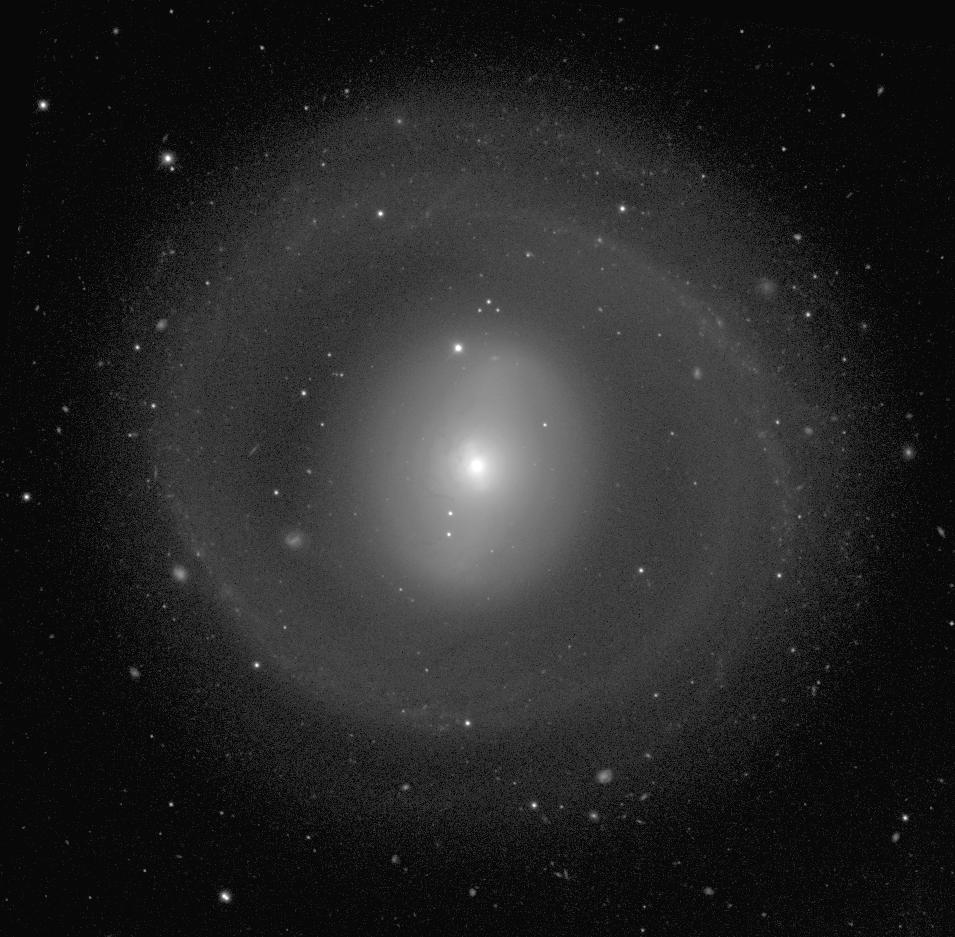

De Vaucouleurs Atlas Type: (R)SAB(l)0/a
Filter: B
Telescope: CTIO 1.5-m
North up , East left
Field Dimensions: 13.9 x 13.6 arcminutes
RC3 Type: (R)SB(s)0/a
RSA Type: SBa
Surface Brightness Range Displayed: 17.0-26.0 mag per square arcsec
Absolute Blue Magnitude: -20.4
De Vaucouleurs Atlas Description:
NGC 1291 has many interesting morphological features. The dominant feature is a strong outer ring , one of the largest in the sky. The ring is 8.2 arcminutes in angular diameter, corresponding to about 20 kpc for a distance of 8.6 Mpc (Tully 1988). The basis for the S0/a classification is the two faint arms breaking from the ring. The bright inner zone is dominated by an extremely well-defined inner lens , which we recognize with the (l) classification. Crossing the major axis of this lens is a primary bar that is barely distinguishable against the brightness of the background lens . This weakness is the basis for the revised SAB classification, which goes against the previous interpretations. In the center of the galaxy, a very well-defined secondary bar is seen. This feature, first noted by de Vaucouleurs (1975), is misaligned with the primary bar by 30o and is much more prominent than the primary bar . However, it is too small to define a normal family classification. The appearance of the inner bright zone of NGC 1291 suggests that the primary bar has dissolved into the lens due to the buildup of a strong central mass concentration (e.g., Kormendy 1979; Pfenniger and Norman 1990).
The B-I color index map reveals other important features. The dominant feature in this map is the thin blue ridge of star formation that lines the outer edge of the outer ring . This area is also where Caldwell et al. (1991) and Crocker, Baugus, and Buta (1996) found HII regions . Parts of the two outer arms also show enhanced blue colors. In contrast, there is little evidence for star formation in the inner zone. The main part of the lens shows instead a complex dust pattern of short spiral arcs, mostly confined to one side of the nucleus. In this same area, Crocker, Baugus, and Buta (1996) found a complex pattern of diffuse ionized gas.
Van Driel et al. (1988) show that the HI in NGC 1291 is largely confined to the outer ring , with a large hole more than twice the size of the bar inside the ring. Bregman et al. (1995) found a strong anticorrelation between X-ray emitting gas and HI in that the X-ray emission comes only from the bulge region within the HI hole. They suggest that thermal mixing or conduction cause one component to dominate the other in their respective regions.